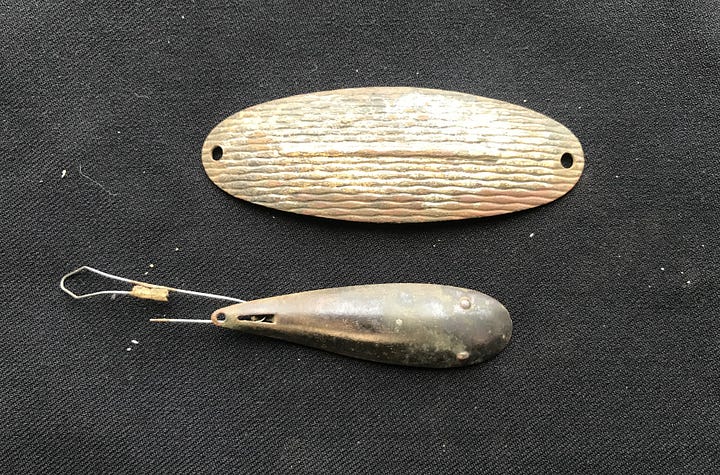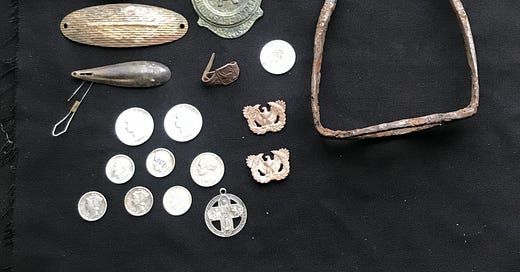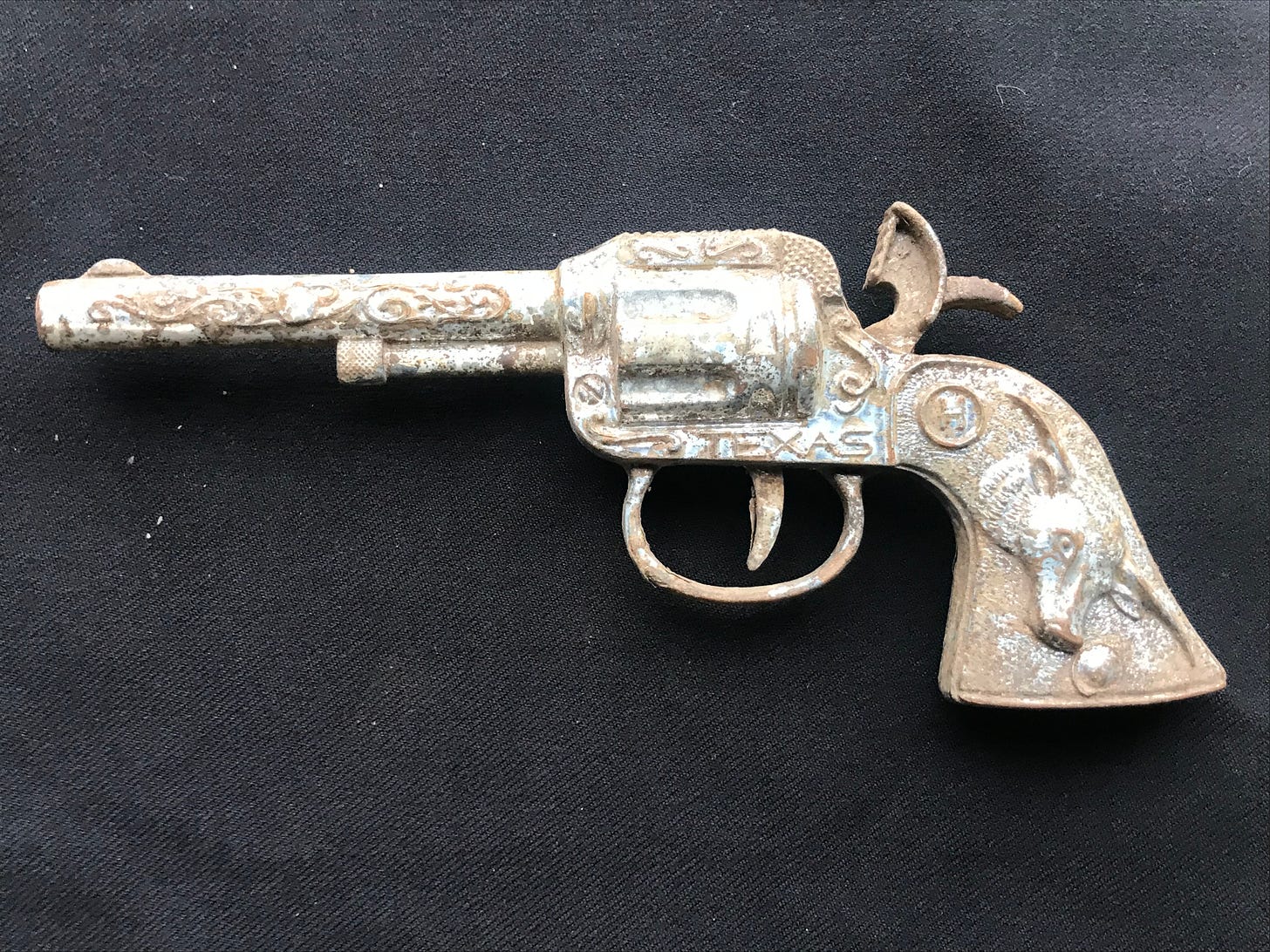Despite some frigid days and snowfall, I managed to get out a little since the first of the year.
This first photo is of the silver coins I’ve found so far. What, you say? You see a nickel in the photo? I’m glad you noticed; it shows you’re paying attention! You may or may not know that on October 8, 1942, the wartime five cent piece was introduced. It was composed of 56% copper, 35% silver, and 9% manganese. Originally, nickels were 75% copper and 25% nickel, but nickel was a critical war material—thus the change, earning these the moniker “silver nickels”. The pre-war composition was resumed in 1946.
The Mercury dimes shown here are the 98th and 99th that I’ve found since I began detecting in 2012.


The next couple of finds were recovered where the old Chambersburg Reservoir used to be. It used to be known as Birch Run Reservoir and was located along Route 233 just north of Caledonia State Park. It was built in the mid-1930’s and was drained in 2003 due to seepage issues. The first photo is a couple fishing lures, and the next is a school patrolman’s badge. They were all found below the reservoir water level, so apparently someone threw the badge into the water.
Next, there are two eagle pins that I found near an old homesite that I’ve detected with moderate success in the past. An internet search suggests these are military pins and were used on hats or coat lapels. The house was gone by the 1970’s, so they’re at least fifty years old, perhaps much older because the design dates to at least World War I.



Not far from the pins, I dug this sterling silver religious medallion, along with one of the most unusual pieces I’ve ever unearthed. At first, I thought this second item was just another large cent, but after a little cleaning I realized that it had two obverse (heads) sides! Also, notice the little pin that held the two sides together. What was it used for, and why would somebody go to that much trouble to make it from two normal coins? Was it a magician’s token? A cheater’s coin?
I really love finding old pocket watches, and this is one of the finer examples I’ve found. This watch, called the Pocket Ben, was introduced by Westclox in 1915 and made in a series of styles until about 1990. This particular model, called Style 4, was made from 1933-1942. See more on pocket watches I’ve found in this link.
I found this nice cap pistol earlier this year. It was made by Hubley and dates to around 1965. Hubley was a Lancaster County business between 1894 and the mid-1970’s that specialized in cast iron toys, mostly cars, trucks, and cap guns.
In one of my previous posts (link here), I talked about finding artifacts out in the middle of the woods, and that’s where I found this old stirrup. It’s an angled model, meant to make long rides (hacks, if you prefer) more comfortable on the rider’s ankles.
Finally, here are three miscellaneous items that I think are kinda cool. First is the handle to a pewter fork or spoon. Too bad it wasn’t whole— it would have been one of my best cutlery finds. Next, this ring is probably a child’s ring, based on the adjustable nature of the back. Still, I think it’s got a pretty cool design. Finally, is this bottle opener. My guess is that it’s from the ‘60’s or ‘70’s and possibly had a wooden handle.













You got 99 dimes but …
Do you keep count of the number of each type of coin/object that you find?